Research - (2023) Volume 11, Issue 1
The needs of radiology technologists in radiology departments in Saudi Arabian hospitals
Alhozaimi AH1*, Almusabahi A2 and Almesned AF3
*Correspondence: Alhozaimi AH, Ms. in Medical Imaging, MOH, Saudi Arabia, Email:
Abstract
Background: The workforce is a critical component of any organization, and therefore organizations around the world pay attention to human resources (HR) in work design. A strategic plan for HR needs a scientific approach, in order to determine HR needs and allow employees to perform their work duties with high quality and efficiency. In Saudi Arabia, the number of radiology technologists required in radiology departments is determined based on hospital capacity. Aim: The aim of this study was to generate a standardized equation based on the number of imaging machines to calculate the radiology technologist needs in radiology departments in Saudi Arabia in order to operate radiology machines properly. Method: the researcher analyzed the work stages involved in a radiology exam and calculated the number to be used in the calculation. Microsoft Excel was used because it was convenient and facilitated the mathematical equations. Results: the application of the new standard made a difference to the number of radiology technologists required in the radiology departments of the MOH. The new standard required a workforce 25–50% lower than before, reflecting spending efficiency. Conclusion: the study exposed the importance of determining the HR needs in radiology departments according to the number of machines in the department.
Keywords
Radiology, Technology, Needs, Saudi Arabia, Human resources
Introduction
Workforce is a critical matter in any organization. Recently, the leaders of organizations around the world have dedicated attention to human resources (HR) in the design of work packages. A strategic plan for HR requires a scientific approach to determine the HR needs in order to perform work duties with high quality and efficiency [1]. SHRM, a society concerned with human resource plans and management, stated that the workforce needs intensive analysis for planning, and that the following steps must be taken:
Current analysis of the available workers and their skills levels, workers close to retirement, turnover rate, and government rules.
Future forecast based on business needs, expansion and constriction in the market place, availability of workforces and quantity needed.
Calculate the gap between current analysis and future forecast.
Apply solution.
To conclude, when hiring, it is essential to hire talented workers [2]. In the health sector, it is essential to provide HR, because of the need to deal with patients. Therefore, it is important to determine the HR standards used to perform hospital duties [3]. A radiology department contains several radiology machines for diagnosis and treatment of a variety of illnesses [4,5]. Judgment is required to assign the adequate number of radiology technologists to operate the radiology machines efficiently and provide the referred physician with a report. A radiology department depends on three items to produce a medical report: an appropriate machine, the necessary HR, and a procedures protocol.
Undoubtedly, HR is the most important category because without the radiology technologists, no machine works and no protocol applies. However, how many HR technologists are needed in radiology?
In Saudi Arabia, there are 287 hospitals and the majority have less than 100 beds [6]. The radiology department productivities differ between locations, depending on the population size and hospital capacity [2]. Therefore, it is a little complicated to determine the radiology technologist needs in Saudi Arabia. This study aimed to derive a standardized equation based on the number of machines present in a radiology department that can be employed to determine the radiology technologist needs in radiology departments in Saudi Arabia. Currently, the MOH in Saudi Arabia calculates radiology HR needs according to hospital capacity. Table 1 shows the old MOH standard.
| Occupation name | Beds capacities | ||||||
|---|---|---|---|---|---|---|---|
| 50 | 100 | 150 | 200 | 300 | 400 | 500 | |
| General radiology technologist | 16 | 38 | 59 | 61 | 88 | 147 | 147 |
| Nuclear medicine technologist | 0 | 0 | 0 | 1 | 2 | 4 | 4 |
| Medical physicist | 0 | 1 | 1 | 1 | 2 | 3 | 3 |
Table 1: Old MOH standard.
However, this is a partially inaccurate approach to determining radiology technologist needs, because radiology departments depend not just on the number of machines, but also their function. For instance, magnetic resonance imaging (MRI) procedures and patient preparation are obviously different to those of general X-ray. MRI procedures take from 20 to 45 minutes and the preparation must be completed using a proper approach, but by contrast, general X-ray procedures last mostly 5 to 10 minutes. Moreover, some hospitals in Saudi have the same capacity but had different radiology equipment according to location and population. Therefore, Radiology Administration and Applied Services (RAAS) at the MOH investigated the standard for radiology technologists to ensure that it was compatible with its ambitions and goal to produce high-quality services at a convenient time with the optimum use of resources. The crucial factor in the success of this target was to find appropriately skilled high-quality technologists in order to employ the radiology equipment with high efficiency. Since 2005, the Central Committee of Radiology in RAAS has paid attention to establishing a standard for HR technologists in radiology. It linked hospital capacity to radiology equipment and then assigned the number of personnel required to operate the radiology equipment. Moreover, it assigned administrative and nursing services, not just radiology technologists. Thereafter, the Minister of Health approved this standard on 6/9/2005. Tables 2 and 3 illustrate the Central Committee standard.
| Mammo (1+N) | Dexa (1+N) | NM (1+N) | PET (1+N) | Spector CT (1+N) | Angiography | CT (Intra operative) | MRI (Intra Operative) | MRI (1+N) | CT (1+N) | OR (C-arm+Plain X-ray) | Mobile | US (1+N) | Fluoro (1+N) | General (1+N) | Bed capacity | ||||||||
|---|---|---|---|---|---|---|---|---|---|---|---|---|---|---|---|---|---|---|---|---|---|---|---|
| 8Hs | 8Hs | 8Hs | 8Hs | 8Hs | 24 Hrs. | 8Hs | 18 Hs | 8Hs | 18 Hs | 8Hs | 16Hs | 8Hs | 24Hs | 8Hs | 24Hs | 8Hs | 8Hs | 8Hs | 8Hs | 24Hs | 8Hs | ||
| Hospitals majority in Saudi were 30-50 beds and they treated equal | Note | 50 | |||||||||||||||||||||
| NA | NA | NA | NA | NA | NA | NA | NA | NA | NA | NA | NA | NA | 5 | NA | NA | 1 | 1 | 1 | 1 | 5 | 2 | Male | |
| NA | NA | NA | NA | NA | NA | NA | NA | NA | NA | NA | NA | NA | 1 | NA | NA | 0 | 1 | 1 | 1 | 3 | 1 | Female | |
| Hospitals with capacity between 101-130 were treated as 100 beds | Note | 100 | |||||||||||||||||||||
| 0 | NA | NA | NA | NA | NA | NA | NA | NA | NA | NA | NA | NA | 6 | NA | NA | 1 | 1 | 1 | 1 | 5 | 2 | Male | |
| 3 | NA | NA | NA | NA | NA | NA | NA | NA | NA | NA | NA | NA | 2 | NA | NA | 0 | 1 | 1 | 1 | 3 | 1 | Female | |
| MRI technologists were studies because the majority of 200 beds hospitals were located in big province therefore | Note | 200 | |||||||||||||||||||||
| 0 | 1 | NA | NA | NA | NA | NA | NA | NA | NA | NA | NA | 3 | 6 | 1 | NA | 1 | 1 | 1* | 2 | 5 | 2 | Male | |
| 3 | 1 | NA | NA | NA | NA | NA | NA | NA | NA | NA | NA | 1 | 2 | 1 | NA | 1 | 1 | 1* | 1 | 3 | 1 | Female | |
| The study did not include the NM because they usually were near to teriary hospital | Note | 300 | |||||||||||||||||||||
| 0 | 1 | NA | NA | NA | 3 | 2 | NA | NA | NA | NA | 7 | 3 | 6 | 2 | 3 | 1 | 2 | 1 | 2 | 5 | 2 | Male | |
| 3 | 1 | NA | NA | NA | 2 | 1 | NA | NA | NA | NA | 2 | 2 | 3 | 1 | 1 | 1 | 1 | 1 | 1 | 3 | 2 | Female | |
| The study did not include radiotherapy, cardiac centres, endoscopy units, and lithotripsy units | Note | 400-500 | |||||||||||||||||||||
| 0 | 1 | 1 | 1 | 1 | 1 | 2 | 2 | 1 | 4 | 2 | 7 | 3 | 6 | 2 | 4 | 1 | 3 | 1 | 2 | 6 | 2 | Male | |
| 3 | 1 | 1 | 1 | 1 | 2 | 1 | 1 | 1 | 2 | 1 | 2 | 2 | 3 | 1 | 2 | 1 | 1 | 1 | 1 | 3 | 2 | Female | |
Table 2: Radiology committee standard (A).
| Transcriptionist | Technical instructor | Quality aasurance | Deputy chief technologists | Chief technologists | Radiology Nurse | Medical secretary | Medical physicist | RPO | Receptionist | Pacs admin | Bed capacity | |||||
|---|---|---|---|---|---|---|---|---|---|---|---|---|---|---|---|---|
| 8Hs | 8Hs | 8Hs | 8Hs | 8Hs | NM | INT | SPE | CT | MRI | 8Hs | 8Hs | 8Hs | 8Hs | 8Hs | Note | 50 |
| 1 | 0 | 0 | 0 | 1 | NA | NA | 0 | NA | 0 | 1 | 1 | 1 | 1 | Male | ||
| 1 | 0 | 0 | 0 | 1 | NA | NA | 1 | NA | 0 | 1 | 0 | 1 | 0 | Female | ||
| Note | 100 | |||||||||||||||
| 1 | 1 | 1 | 0 | 1 | NA | NA | 1 | NA | 1 | 1 | 1 | 1 | 2 | Male | ||
| 1 | 1 | 1 | 0 | 0 | NA | NA | 1 | NA | 0 | 0 | 0 | 1 | 0 | Female | ||
| Note | 200 | |||||||||||||||
| 2 | 1 | 1 | 1 | 1 | NA | NA | 0 | 0 | 1 | 1 | 1 | 2 | 2 | Male | ||
| 2 | 1 | 1 | 0 | 0 | NA | NA | 1 | 1 | 1 | 0 | 0 | 1 | 0 | Female | ||
| Note | 300 | |||||||||||||||
| 3 | 1 | 2 | 1 | 1 | NA | NA | 1 | 0 | 1 | 2 | 1 | 2 | 2 | Male | ||
| 2 | 1 | 1 | 0 | NA | NA | 1 | 1 | 1 | 0 | 0 | 1 | 0 | Female | |||
| Note | 400-500 | |||||||||||||||
| 5 | 2 | 3 | 1 | 1 | 1 | 1 | 1 | 1 | 0 | 2 | 3 | 1 | 3 | 3 | Male | |
| 5 | 1 | 1 | 0 | 0 | 1 | 2 | 1 | 1 | 1 | 1 | 3 | 1 | 3 | 0 | Female | |
Table 3: Radiology committee standard (B).
This standard solved mistakes in the old standard and contributed to providing sufficient numbers of radiology technologists in many hospitals in Saudi Arabia. However, the following was noted in committee standard:
There were inaccuracies in determining the HR needs for machines’ daily work, because some hospitals had two machines that worked 24 hours a day, while others worked 8 hours or sometimes 16 hours a day.
There were inaccuracies in the adjustments for weekly afternoon or night duties and annual vacations.
The radiology machines differed from province to province.
Therefore, this study wishes to standardize a new equation for calculating the number of radiology technologists required, one that it is based on the number of machines in a department and the number of radiology technologists required to operate the radiology machines properly.
Methodology
This study took into account the following factors:
Actual working hours in Saudi Arabia.
Radiology procedures (morning duty).
Afternoon, night and weekend duties.
Annual vacations.
Medical specialties that do not deal with patients directly.
Each of these is discussed in more detail in the following sections.
Actual working hours in Saudi Arabia
Work regulations differ from one country to another. The Ministry of Human Resources and Social Development in Saudi Arabia is the body that oversees work regulation. It adjusts and regulates the work system, and produces updated work regulations for all the specialties. In 2020, it issued the Medical Professions Regulations (MPR), in Arabic only [7]. However, there was a Q&A link for labor education in English version (Figure 1) [8].
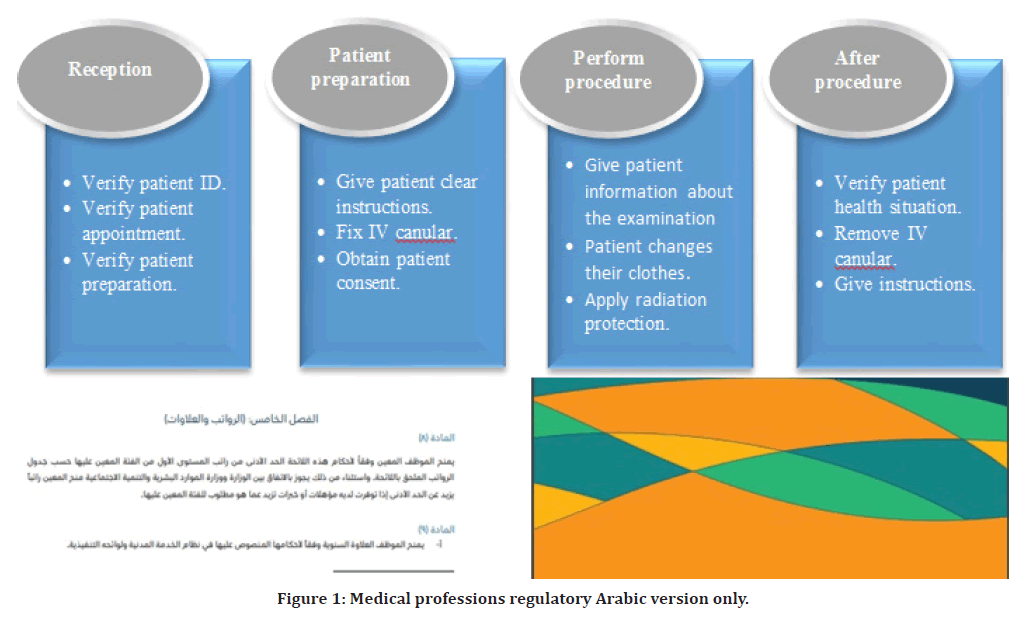
Figure 1. Medical professions regulatory Arabic version only.
Radiology procedures (morning duty)
Morning duty is the fundamental work time. The majority of radiology procedures take place in the morning, particularly interventions and procedures that need contrast media. Therefore, 90% of radiology procedures are done on the morning duty. Moreover, the duration of the procedures varies from one machine to another. Therefore, this study needed to extract a numerical factor in order to adjust the complexity of the data. This factor was obtained in the following way:
Calculating the time taken for all the activities during a radiology procedure, from the patient’s arrival to their leaving
In order to calculate the times accurately, it was vital to have an understanding of the activities involved in radiology procedures. This study depended on a competent committee of seven members who worked in hospitals. It was their task to determine the activities that take place when performing an examination, and the average time of each activity. There was a consensus that procedures mainly consist of five activities. Figure 2 illustrates these activities.

Figure 2. Activities during exam.
The fundamental activity in this sequence is performing the Procedure, and this also consumes the bulk of the time. Moreover, this requires a highly proficient technologist to perform the radiology examination correctly. On the other hand, the duration of each activity changes from one machine to another. For instance, the average time required to perform a procedure in Computed Tomography (CT) is around 10 minutes, whereas the average time required for an MRI scan is around 20 minutes. Remarkably, the procedure times of one machine were different. Therefore, The competent team on the committee agreed the average time required for each activity. The data are presented in Table 4.
| Reception | Prepare for procedure | Performing the procedure | After procedure | Training | |
|---|---|---|---|---|---|
| CT | 2 min | 5 min | 15 min | 7 min | 5 min |
| MRI | 10 min | 10 min | 20 min | 12 min | 7 min |
| Angiogram | 15 min | 30 min | 40 min | 17 min | 7 min |
| Ultrasound | 1 min | 1 min | 20 min | 2 min | 5 min |
| General | 0.5 min | 0 min | 8 min | 1 min | 1 min |
| Portable | 1 min | 0 min | 15 min | 1 min | 1 min |
| C-arm | 0 min | 0 min | 30 min | 0 min | 5 min |
| Fluoroscopy | 0 min | 3 min | 30 min | 0 min | 2 min |
| Dental | 0.5 min | 0 min | 6 min | 0.5 min | 1 min |
| Mammography | 2 min | 0 min | 30 min | 3 min | 5 min |
| SPECT, PET | 5 min | 10 min | 40 min | 10 min | 5 min |
| DEXA | 1 min | 0 min | 15 min | 1 min | 1 min |
Table 4: Average time for each activity.
Number of radiology procedures performing in morning duty
The quantity of radiology exams performing in morning shift is crucial in this study. Some machines work in high productivity especially in big cities whereas some work in low productivity as in urban cities. This variety is because location and human population. This study carried out quick research in 10 hospitals randomly. Table 5 shows number of radiology procedures in some hospitals.
| Hospital No. | Portable | General | US | CT | MRI | Mammogram |
|---|---|---|---|---|---|---|
| 1 | 6 | 59 | 10 | 16 | 23 | 3 |
| 2 | 5 | 45 | 12 | 7 | NA | 1 |
| 3 | 7 | 30 | 14 | 5 | NA | NA |
| 4 | 10 | 30 | 10 | 28 | 14 | 2 |
| 5 | 10 | 40 | 10 | 7 | 10 | 3 |
| 6 | 8 | 61 | 20 | 12 | 15 | 7 |
| 7 | 5 | 33 | 16 | 10 | NA | NA |
| 8 | 8 | 70 | 8 | 23 | 18 | 5 |
| 9 | 3 | 59 | 12 | 16 | 12 | 2 |
| 10 | 2 | 90 | 26 | 26 | 17 | 1 |
Table 5: Number of radiology procedures in some hospitals.
Total hours required for a single duty
According to MPR, the required number of hours for employees in Saudi Arabia is 8 hours daily and 48 hours weekly (Figure 3).

Figure 3. Working hours.
Calculate the time for a technologist to perform each activity
A radiology technologist’s duties range from meeting the patient in reception, carrying out the procedure and tasks after finishing the procedure. Moreover, training new employees or students is an extra task. Accordingly, the calculation is as follows: (No. of procedures in the morning × Activity time in minutes)/60.
The application of this equation for radiology machines in order to calculate activity time per machine is illustrated in Table 6.
| Reception | Prepare for procedure | Performing procedure | After procedure | Training | Total time to perform activities | |
| No. of procedures in the morning | ||||||
| Activity time / min | ||||||
| Performing activity time /hours |
Table 6: Calculation of activities time per machine.
Table 6 illustrates the calculation of the time required for each activity. As mentioned previously, the number of radiology procedures carried out varies according to hospital location and human population. Therefore, the number of radiology procedures performed was taken from hospitals. In addition, Table 4 was used to calculate the average activity times. Performing activity time is calculated by the equation: (No. of procedures × Activity time per minute)/60. The aim of Table 6 was to determine the HR needed to perform the activities, in contrast with actual working hours. Thus, HR needs=the total time to perform activities / actual daily working hours.
Extracting the numerical factor
The aim of this study was to standardize an equation that could be used to determine the radiology technologist needs in radiology departments in Saudi Arabia, to operate the radiology machines correctly. The numerical factor was meaningful in this regard. The equation was (Total time to perform activities/Actual daily working hours).
Accordingly, the equation for morning duty is ((5×8) × numerical factor) /40) × no. of machines.
Afternoon, night and weekend shifts
Commonly, the radiology procedures on afternoon and night duties or weekend shifts are emergency cases that are performed without radiologist or nurse involvement. Moreover, they are performed without preparation. However, some machines work more than 8 hours on a weekday, and others may work 16 or 24 hours. According to data received from the Picture Archive and Communication System (PACS) at MOH, the following machines’ daily working hours are:
CT, General X-ray, Portable X-ray, and C-arm X-ray: 24 hours.
Ultrasound (US) , MRI, and Angiography: 16 hours.
Other machines: 8 hours.
Weekday working hours on afternoon and night duties are assumed to be routine work, the same as on the morning shift. On the other hand, working on a weekend is assumed to be on-call work. According to the MPR, radiology technologists are obligated to work an extra 8 hours per week [7].
Accordingly, the equation for afternoon and night shifts was (5×16)/40 for machines working 24 hours a day, and (5×8)/40 for machines working 16 hours a day, and for machines such as Fluoroscopy, Dental, Mammography and Nuclear machines was zero. Moreover, the equation for a weekend was ((5×8) × numerical factor)/40) × no. of machines/6 for machines such as CT, General, Portable and C-arm that working 7 days a week. However, the other machines are rarely used on a weekend. Therefore, the weekend equation was zero.
Annual vacation
According to MPR, radiology technologists have 36 days annual vacation and two holy day vacations. Each holy day vacation includes 12 days. However, they are obligated to work one of two holy days [7]. The equation to calculate the annual vacation was the sum of the above equations × (36+12))/360.
Medical and para-medical specialties that do not deal with patients Some medical and para-medical specialties are necessary in radiology department work. These medical specialties are discussed below.
Medical physicist
Medical physicists apply physics in healthcare for machine quality assurance, measurement, and treatment. This study took data from an article published by the International Atomic Energy Agency to determine medical physicist needs according to hospital capacity [9]. Table 7 summarizes the medical physicist needs.
| 50 beds | 100 beds | 150 beds | 200 beds | 300 beds | 400 & 500 beds | |
|---|---|---|---|---|---|---|
| Consultant medical physicist | 1 | 0 | 0 | 1 | 1 | 2 |
| Senior specialist medical physicist | 0 | 0 | 1 | 1 | 1 | 2 |
| Specialist medical physicist | 0 | 2 | 2 | 3 | 3 | 3 |
Table 7: Medical physicist needs based in hospital capacity.
Nursing
Nursing is a profession in the medical sector that provides care for patients. It is crucial in healthcare and could be described as the heart of medicine. In addition, nursing plays a fundamental work in radiology because many radiology procedures need nursing skills [5]. Therefore, RAAS relies upon announcement number 701011 dated 22/01/2017 by the Assistant Agency for Supportive Medical Services at MOH, which determined the number of nurses needed in radiology, according to hospital capacity (Table 8). However, according to the opinions of leaders working in some medical cities, this distribution does not meet the work requirements in radiology. This study took their requirement of 18 nurses for medical cities with more than 500 beds.
| Bed NO. | M/F | MRI | CT | Special procedures | Intervention | Nuclear medicine | Total |
|---|---|---|---|---|---|---|---|
| 50 | Male | N/A | Request if need from nurse office | N/A | N/A | - | |
| Female | N/A | N/A | N/A | - | |||
| 100 | Male | N/A | 1 | N/A | N/A | 1 | |
| Female | N/A | 1 | N/A | N/A | 1 | ||
| 200 | Male | - | 1 | N/A | N/A | 1 | |
| Female | 1 | 1 | N/A | N/A | 2 | ||
| 300 | Male | - | - | 1 | N/A | N/A | 1 |
| Female | 1 | 1 | 1 | N/A | N/A | 3 | |
| 400-500 | Male | - | 1 | 1 | 1 | 1 | 4 |
| Female | 1 | 1 | 1 | 2 | 1 | 6 | |
Table 8: Distribution of nurse in radiology.
PACS
Picture Archiving and Communicating System (PACS) is a technology used in radiology departments to store and transmit electronic images and reports. The PACS administration is done by an employee (or employees) in the radiology department [10]. In order to determine the number of PACS administrators required, the researcher met with PACS specialists at RAAS at the MOH. It was confirmed that the numbers required depend on hospital capacity (Table 9).
| Less than 200 | 200-349 | More than 350 | |
|---|---|---|---|
| PACS Admin | 1 | 2 | 3 |
Table 9: Distribution of PACS Admin in radiology.
Radiation protection, quality, continuous education and reception
These specialties are necessary in radiology departments and they are important roles for both patients and radiology technologists. Hospital capacity was used to determine the number of these specialties required, and the data are summarized in Table 10.
| Beds number | ||||||
|---|---|---|---|---|---|---|
| 50 | 100 | 150 | 200 | 300 | 400 & 500 | |
| Radiation protection | 0 | 1 | 1 | 1 | 1 | 1 |
| Quality | 0 | 1 | 2 | 2 | 2 | 4 |
| Continuous education | 0 | 1 | 1 | 1 | 2 | 4 |
| Reception | 1 | 2 | 3 | 3 | 4 | 6 |
Table 10: Distribution of radiation protection, quality, continuous education, and reception technologist in radiology.
Instruments
MS Excel was a valuable application in this study. It is a simple, available, and powerful application that can help users to perform calculations and sort data. It was therefore very useful in this study [11]. The study applied the equations in an Excel sheet and linked them together to present the correct results based on the number of machines available in a hospital. Figure 4 shows the new formatting of the Excel workforce standard calculation.
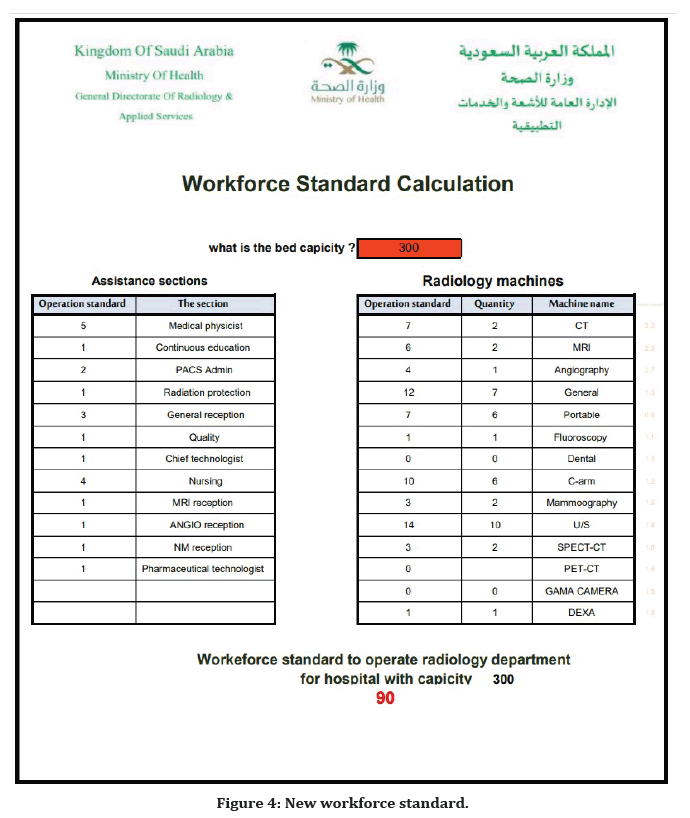
Figure 4. New workforce standard.
Results
The targeted hospitals for data collection were selected randomly, but the study focused on hospitals with different capacities in order to create reliability in the application of the workforce standard. Table 10 shows the result of applying the new workforce standard to hospitals of different capacities. The researcher noticed that the current workforce standard relied on the number of radiology machines only, regardless of bed capacity. For instance, Table 10, the Buraydah hospital with 300 beds requires 77 technologists, but the Jeddah eastern hospital with 300 beds requires 97 technologists. Similarly, the Shnan and Tumair hospitals both have 50 beds but the workforce required is 21 and 25 technologists, respectively. Remarkably, the Adham and Al-Thager hospitals also both have 50 beds, but they require 34 and 48 technologists, respectively. In one word, the number of employees was calculated by considering hospitals’ equipment, regardless of their bed capacity. Table 11 shows applying the new standard in deferent hospitals. Another perspective is gained by comparing the new and old standards. Figures 5 to Figure 8 illustrate the comparisons between the new and old standards.
| Hospital Name | Hospital capacity | Radiology machines | Assistance section | Total | ||||||||||||||||||||||||
|---|---|---|---|---|---|---|---|---|---|---|---|---|---|---|---|---|---|---|---|---|---|---|---|---|---|---|---|---|
| CT | MRI | Angiography | General X-ray | Portable | Fluoroscopy | Dental | C-Arm | Mamography | U/S | Sect-CT | Pet-CT | Cama Camera | Dexa | Medical physicist | Continous education | PACS admin | Radiation protection | General reception | Quality | Chief technologist | Nursing | MRI Reception | Angio reception | NM Reception | Pharmaceutical tech | |||
| King Fahad specialist hospital | 440 | 7 | 8 | 3 | 11 | 11 | 1 | 2 | 8 | 3 | 11 | 2 | 0 | 2 | 1 | 7 | 4 | 3 | 1 | 6 | 4 | 1 | 10 | 1 | 1 | 1 | 1 | 110 |
| Buraydah central hospital | 300 | 8 | 6 | 0 | 11 | 10 | 1 | 1 | 7 | 2 | 8 | 0 | 0 | 1 | 1 | 5 | 2 | 2 | 1 | 3 | 2 | 1 | 4 | 1 | 0 | 0 | 0 | 77 |
| King Saud hospital in Onaizah | 294 | 8 | 9 | 0 | 8 | 8 | 1 | 1 | 6 | 4 | 17 | 0 | 0 | 0 | 1 | 5 | 2 | 2 | 1 | 3 | 2 | 1 | 4 | 1 | 0 | 0 | 0 | 84 |
| Badayea hospital | 120 | 5 | 0 | 0 | 7 | 5 | 1 | 2 | 5 | 0 | 5 | 0 | 0 | 0 | 0 | 2 | 1 | 2 | 1 | 2 | 1 | 1 | 3 | 0 | 0 | 0 | 0 | 44 |
| King salman hospital in Riyadh | 244 | 5 | 8 | 0 | 10 | 7 | 1 | 1 | 7 | 2 | 3 | 0 | 0 | 0 | 1 | 5 | 1 | 2 | 1 | 3 | 2 | 1 | 3 | 0 | 0 | 0 | 0 | 63 |
| Kini!; Saud medical hospital | 700 | 12 | 9 | 3 | 15 | 9 | 2 | 3 | 19 | 2 | 8 | 2 | 0 | 0 | 1 | 7 | 4 | 3 | 1 | 6 | 4 | 1 | 10 | 1 | 1 | 1 | 1 | 128 |
| Paediatric and children hospital in Hail | 200 | 6 | 0 | 0 | 5 | 6 | 1 | 0 | 0 | 2 | 8 | 0 | 0 | 0 | 1 | 5 | 1 | 2 | 1 | 3 | 2 | 1 | 3 | 0 | 0 | 0 | 0 | 47 |
| Shnan hospital in Hail | 50 | 0 | 0 | 0 | 5 | 5 | 0 | 0 | 0 | 0 | 5 | 0 | 0 | 0 | 0 | 1 | 0 | 0 | 0 | 1 | 0 | 1 | 3 | 0 | 0 | 0 | 0 | 21 |
| Tumair general hospital | 50 | 5 | 0 | 0 | 6 | 4 | 0 | 0 | 0 | 0 | 4 | 0 | 0 | 0 | 0 | 1 | 0 | 0 | 0 | 1 | 0 | 1 | 3 | o· | 0 | 0 | 0 | 25 |
| Adham general hospital in Jeddah | 100 | 6 | 0 | 0 | 5 | 1 | 1 | 1 | 5 | 0 | 0 | 6 | 0 | 0 | 0 | 2 | 1 | 2 | 1 | 2 | 1 | 1 | 3 | 0 | 0 | 0 | 0 | 34 |
| Al-Thager hospital in Jeddah | 100 | 6 | 0 | 0 | 8 | 8 | 1 | 3 | 6 | 0 | 3 | 0 | 0 | 0 | 1 | 2 | 1 | 2 | 1 | 2 | 1 | 1 | 3 | 0 | 0 | 0 | 0 | 48 |
| Jeddah eastern hospital | 300 | 8 | 6 | 3 | 9 | 12 | 1 | 4 | 13 | 2 | 11 | 2 | 0 | 0 | 1 | 5 | 2 | 2 | 1 | 3 | 2 | 1 | 4 | 1 | 1 | 1 | 1 | 97 |
Table 11: Applying the new standard in deferent hospitals.
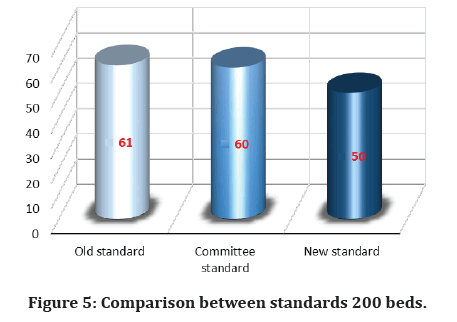
Figure 5. Comparison between standards 200 beds.
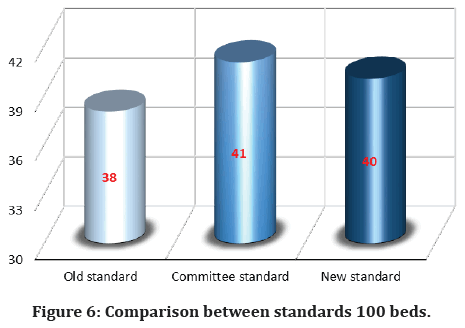
Figure 6. Comparison between standards 100 beds.
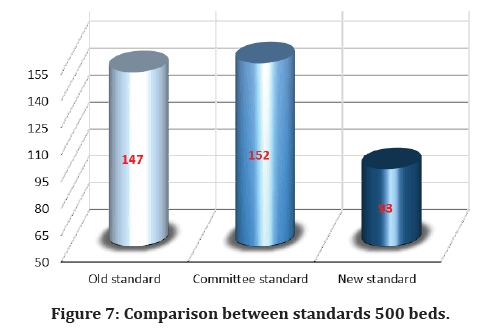
Figure 7. Comparison between standards 500 beds.
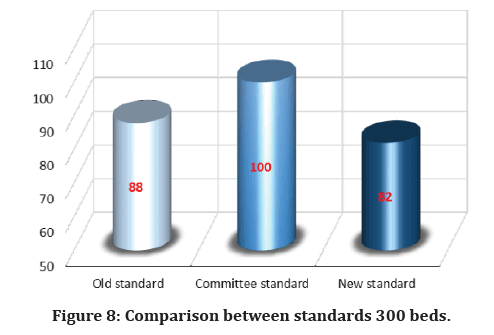
Figure 8. Comparison between standards 300 beds.
The researcher noticed that in hospitals with 100 beds, there was no observed difference between standards. In hospitals with 200 beds, the new standard resulted in a workforce that was 20% lower than with other standards. Moreover, the committee standard for hospitals with 300 beds is 100 technologists, whereas the old standard was 88 technologists. The new standard was 25% lower than the committee standard and 8% lower than the old standard. A substantial difference was noticed between the new standard and the other standards for hospitals with 500 beds the difference lower 50%.
Discussion
The selection and hiring of employees can be time consuming and it requires a concentrated effort. It reflects spending efficiency. Therefore, this study aimed to standardize the equation used to calculate the number of radiology technologists required in radiology departments in Saudi Arabia to operate radiology machines correctly. This new calculation incorporates the number of machines and number of beds in a hospital.
Applying the old standard in hospitals with different bed capacities made it obvious that bed capacity did not reflect the reality of HR needs. For instance, some hospitals have an equal bed capacity but they differ in the machines and equipment they employ. This is because some of them are specialized hospitals such as maternity and pediatric hospitals or eye hospitals. In addition, some of them are tertiary hospitals such as medical cities. Lastly, the majority of hospitals in Saudi Arabia are general hospitals.
If it is assumed that bed capacity is an appropriate standard for calculating HR needs, a vast inaccuracy occurs in terms of HR employment. For instance, psychology or rehabilitation hospitals in Saudi Arabia had high capacities, around 300 beds or even 400 beds. However, they did not require machines equipment same as 300 or 400 hospitals because they do not have many advanced radiology cases and therefore do not require the same HR numbers.
The standard of Central Committee of Radiology stated that one radiology machine needed 7 technologists 24 hours and two machines needed 14 technologists/24 hours. This was a huge number compared to the new standard, in which two machines required only 7 technologist every 24 hours. The new standard is accurate because it was based on the following:
Number of radiology exams.
Required number of radiology technologist hours per week.
Identification of procedure activities and time required.
Annual vacations.
Holy day vacations.
Finally, this list is substantial and therefore determining these data will help to accurately calculate the HR needs.
References
- Rothwell WJ, Kazanas HC. Planning & managing human resources: strategic planning for personnel management. HRD press 1994.
- https://www.shrm.org/ResourcesAndTools/tools-and-samples/toolkits/Pages/default.aspx
- Chhina RS, Chhina RS, Sidhu A, et al. Health manpower planning. AMEI's Curr Trends Diagnosis Treat 2017; 1:53-57.
- https://www.fda.gov/radiation-emitting-products/radiation-emitting-products-and-procedures/medical-imaging
- Fort AL, Deussom R, Burlew R, et al. The human resources for health effort index: A tool to assess and inform strategic health workforce investments. Human Resources Health 2017; 15:1.
- https://www.moh.gov.sa/en/Ministry/Statistics/Pages/default.aspx
- https://hrsd.gov.sa/sites/default/files/14012021.pdf
- https://laboreducation.mlsd.gov.sa/en/gallery/236
- https://www.iaea.org/publications/12208/medical-physics-staffing-needs-in-diagnostic-imaging-and-radionuclide-therapy-an-activitybased-approach
- Choplin RH, Boehme JM, Maynard CD. Picture archiving and communication systems: An overview. Radiographics 1992; 12:127-129.
- https://insightsoftware.com/blog/why-do-we-use-excel
Indexed at, Google Scholar, Cross Ref
Indexed at, Google Scholar, Cross Ref
Author Info
Alhozaimi AH1*, Almusabahi A2 and Almesned AF3
1Ms. in Medical Imaging, MOH, Saudi Arabia2Abdulaziz Almusabahi Consultant Radiologist, MOH, Saudi Arabia
3Ali Fahad Almesned Consultant Radiologist, MOH, Saudi Arabia
Received: 26-Dec-2022, Manuscript No. JRMDS-22-84664; , Pre QC No. JRMDS-22-84664(PQ); Editor assigned: 28-Dec-2022, Pre QC No. JRMDS-22-84664(PQ); Reviewed: 11-Jan-2023, QC No. JRMDS-22-84664 (QC); Revised: 16-Jan-2023, Manuscript No. JRMDS-22-84664(R); Published: 23-Jan-2023
